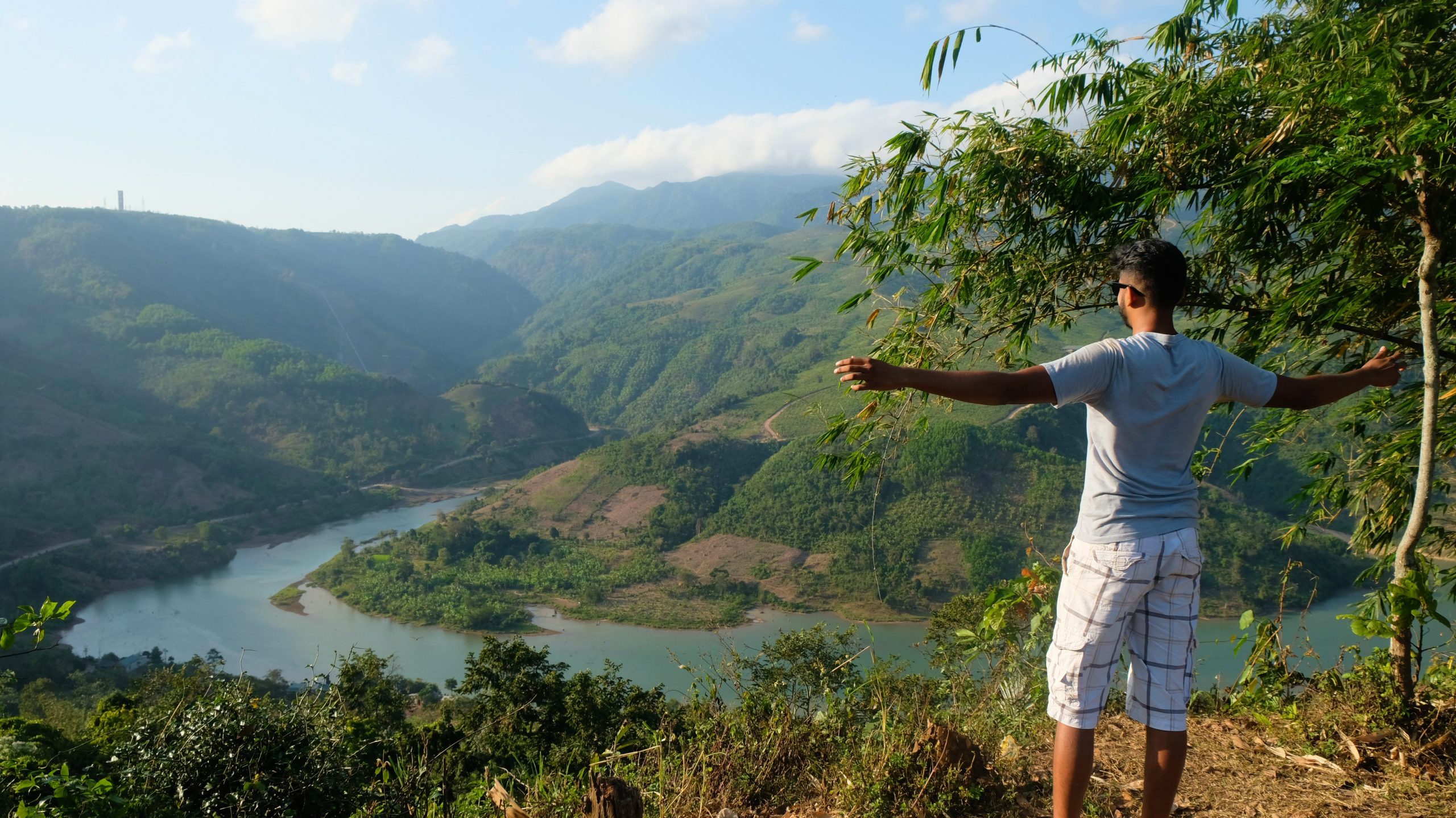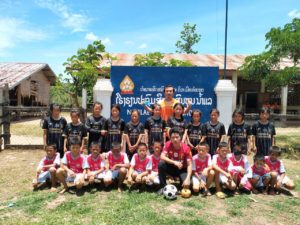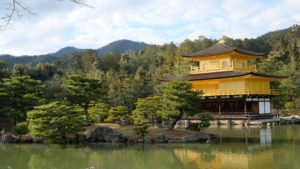Deciding On a Motorbike Tour Through West Ho Chi Minh Trail
I had just finished my first bike tour in Vietnam along the famous Hai Van Pass when Rin, the co-founder of Hoi An Adventures-Motorbike Day tour, asked me if I would like to do another tour with the company. “If you enjoyed the Hai Van Pass, you will love driving through the West Ho Chi Minh trail,” he said. I considered his offer but wondered if I wanted to spend three more days doing another bike tour (The Hai Van Pass was a one day tour, but this one was two nights three days). I was about to reject his offer until he said: “You don’t know our country till you know.” I asked him what he meant, and he explained how so many people come to Vietnam to learn about the country, but they don’t ever take time to see the real side of it. He assured me that, the West Ho Chi Minh trail was where I could truly see the beautiful landscapes, important history, and village lifestyle of Vietnam. I was sold and signed up.
The Itinerary
Day 1: Leave From Hue (or Hoi An) and visit several historical spots along the journey to the West Ho Chi Minh trail. Stay the night in Khe Sanh.
Day 2: Full-day drive through West Ho Chi Minh trail. Stay the night in Phong Nha.
Day 3: Full day tour of caves in Phong Nha National Park
Day 1
Countryside Roads
The tour started early in the morning, and I was picked up by my driver Chau. Chau was Rin’s partner and often was the guide for this tour due to his extensive knowledge of Vietnamese history. Day one of the tour was all about historical sights, but before we got to those, we were going to explore the agriculture life of Vietnam. Chau drove me through the gorgeous countryside roads of Central Vietnam as we passed many farms. Every so often we would stop and observe the farmers and occasionally even talk to them. Chau did an excellent job explaining to me the life of farmers and agricultural workers in Vietnam. Apart from just the traditional farms, we also stopped to see a duck farm, snail farm, and a fishing dock. Just a couple of hours into our journey and I had already learned so much about Vietnamese culture. Agriculture is the backbone of Vietnam, so it was only fitting that our journey started this way.
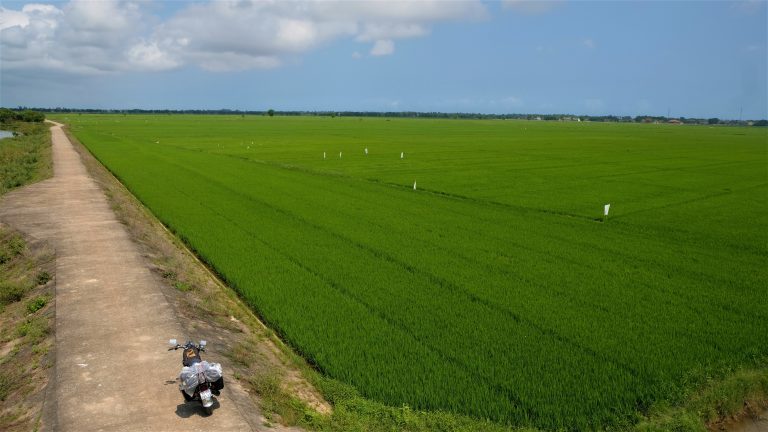
Vinh Moc Tunnels
From the country road, we hit the coastal route to the Vinh Moc Tunnels. Those familiar with the Vietnam War know that the Vietnamese built an extensive network of underground tunnels to protect themselves from American bombings. The most famous tunnel that tourists visit in Vietnam is the Cu Chi tunnels, located near Ho Chi Minh City. I had seen Cu Chi earlier in my trip, but I ended up preferring the Vinh Moc Tunnels. For starters, it was in an isolated part of Vietnam, which meant fewer tourists. I had plenty of time to walk around the tunnels and explore them at a leisurely pace. What was also unique about these tunnels, were that it was primarily used for living as opposed to fighting. I got to see the size of underground family homes, hospitals, movie theater, and so much more. It was a truly eye-opening experience to see the way many Vietnamese had to live during the long (17 years) period of war.
DMZ
We continued on Highway 1 and made a short stop at the DMZ. DMZ stands for Demilitarized Zone and is the area that separated North and South Vietnam during the war.
Truong Son Cemetery
After the DMZ, we took a short detour to see Truong Son Cemetery, the largest cemetery in Vietnam. Truong Son is a military cemetery and contains the graves of over 10,000 Vietnamese soldiers killed nearby DMZ battlefield, West Ho Chi Minh Trail, Southern Vietnam, and in Laos/Cambodia . Looking at the endless rows of graves was a somber but moving sight. Reading about the number of Vietnam War casualties is one thing, but actually standing in the area where many of the bodies are buried makes it all feel more real.
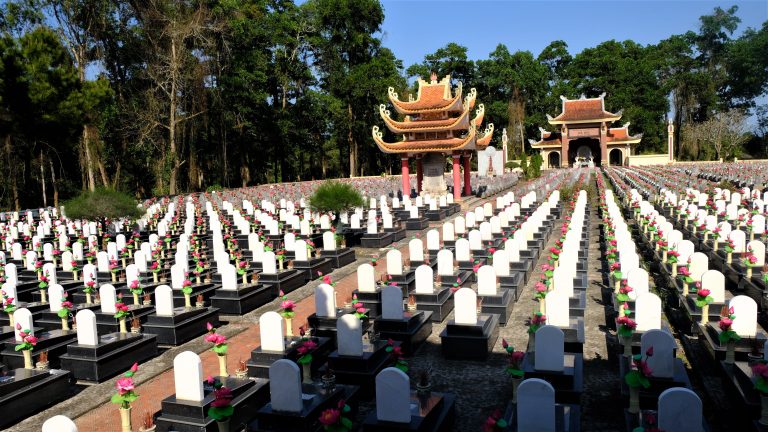
Khe Sanh and Ta Con Airbase
The final stop of the day was Khe Sanh. Khe Sanh is a town located very close to the Laos border. The isolated town played a critical role in the war due to Ta Con airbase, a highly strategic airbase that America had set up in Khe Sanh to block passage along the West Ho Chi Minh Trail. North Vietnam knew it needed control of the airbase to be able to use their trial, and so they planned an offensive to capture Ta Con. What resulted was one of the bloodiest and longest battles of the entire war. After 77 long days of nonstop heavy artillery fire from both sides, the U.S withdrew their troops. In a hurry to retreat, the U.S left behind many of their planes and tanks, which still sit at the airbase today. To walk around the airbase and see these planes and tanks that were left behind (not replicas) was an incredible experience. I had heard about this battle in a documentary I had seen and couldn’t believe I was walking on the very grounds that it all took place. A truly emphatic ending to a jam-packed day one!
Note: If you are interested in the battle you can read more about it here
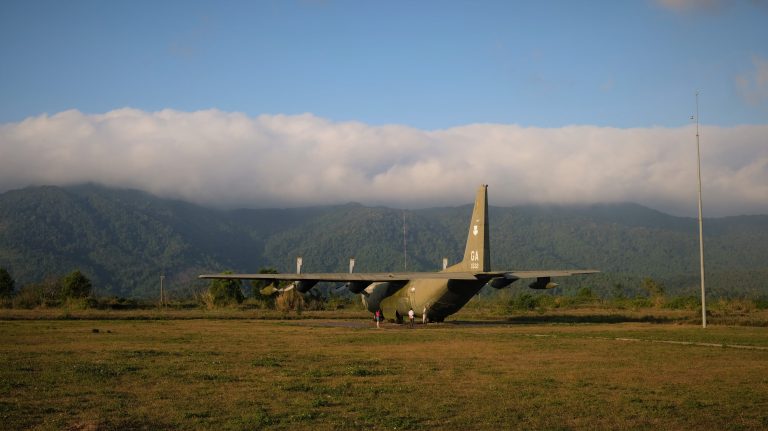
Day 2
West Ho Chi Minh Trail on Route to Phong Nha
Day one had many stops, but day two was all about driving; It was time to ride along the famous West Ho Chi Minh Trail. The West Ho Chi Minh Trail extends from Northern Vietnam, runs through Laos, and connects back in Central and Southern Vietnam. The trail has historical significance, specifically relating to the Vietnam war. We started our journey along the trail by ascending to an incredible view of the surrounding jungle.
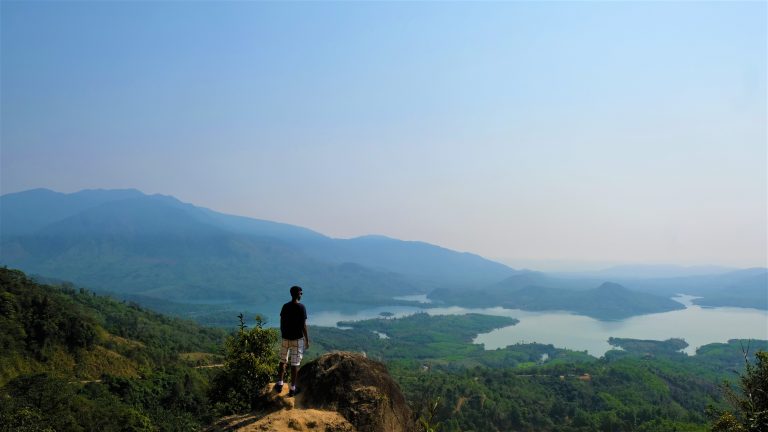
From there, we drove through the thick jungle that we had just seen and enjoyed the peaceful ride and stunning views. I couldn’t imagine how people could make the entire journey that we had been driving on, on foot. Every so often, Chau would stop to point out Vietnam War spots or share historical tidbits about the trail. As we drove through the roads covered by large, thick, green trees. I began to see the genius behind the trail. The Vietnamese used this vast amount of trees in the jungle to keep them hidden from the Americans. One could argue that the trail was the main reason Northern Vietnam won the war. Here we were driving on it. Pretty freaking cool.
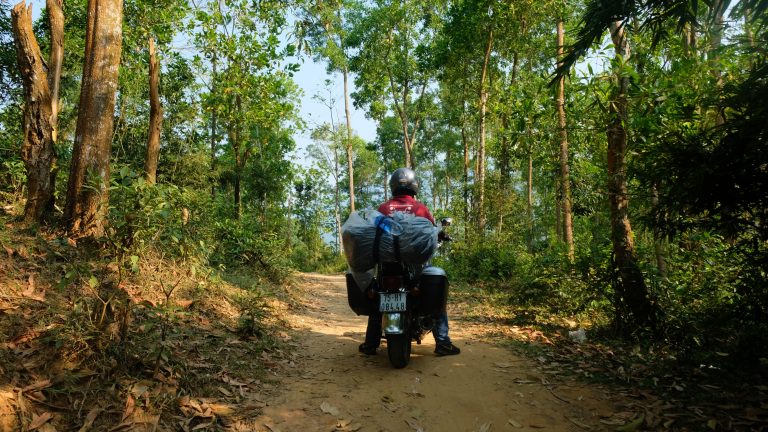
The entire drive was peaceful and beautiful as we didn’t see another car for most of the day. It was just the bike, us, and the jungle. At one point, we saw monkeys jumping from the trees, and we stopped to watch them. The more we drove, the more I was amazed at the sheer amount of greenery. I don’t think I had ever seen this many trees in my life. Towards the end of the day, we stopped by to see a village situated near the trail. From afar, I could see kids running on the farm, and women working in the fields. I could only imagine what the lifestyle in such an isolated part of the country was like.
The day ended as we arrived in the awesome little town of Phong Nha. Another long day of driving warranted for a cold beer, good food, and some relaxation to close out day two.
Day 3
Phong Nha Cave
The tour of Vietnam War spots and the Ho Chi Minh Trail was over, but my specific tour with Hoi An Adventures-Motorbike Day tour included a bonus day at Phong Nha National Park-so I will include it in this post.
Phong Nha is known for its stunning caves, and my specific tour package included a visit to two of them. The first cave on the itinerary was a wet cave called Phong Nha Cave. To get inside, we needed a boat, so a Vietnamese worker rowed us inside. I had seen many caves in different parts of the world before, but I immediately knew this one was different. It had a unique aesthetic to it. As I enjoyed the beauty of the cave, I couldn’t help but think about how special of a country Vietnam was. Yesterday I was driving through incredibly beautiful jungle roads, and today I was boating through some of the most picturesque caves on the planet. The beauty never stops in Vietnam!
Paradise Cave
I left Phong Nha Cave wowed, but Chau assured me Paradise Cave was even better. He was right. Paradise Cave is a dry cave, so I was able to see this one on foot. First impressions, it was massive. It felt like an entire city could be built inside the cave. I spent a good hour or two, wandering through the cave and taking endless amounts of photos. The caves at Phong Nha were truly one of the best-hidden gems of Vietnam.
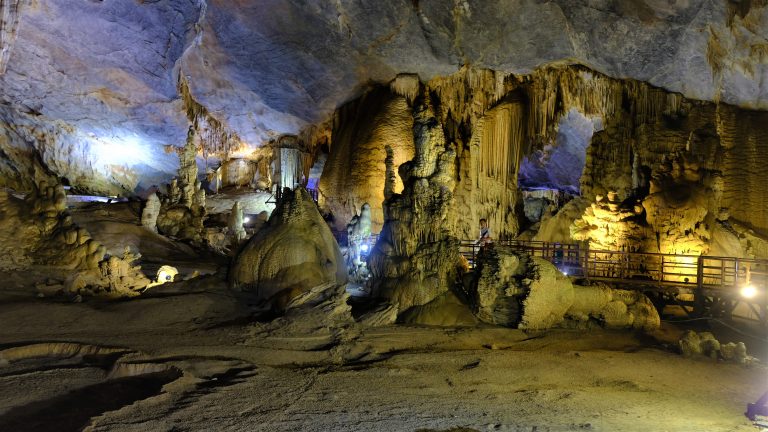
8 Ladies Temple
The last stop of the day was a historical one. 8 Ladies temple was a temple created inside a cave to honor the eight women that died in the cave during the Vietnam War. An American bomb hit the cave, and the women inside were trapped for several days before passing away. Hard to believe that war was able to find its place in even a beautiful town like Phong Nha.
End of Tour
After seeing 8 Ladies Temple, Chau took me on the bike for one last spin. When we returned, we sat for one more beer together before heading off on our separate ways.
Reaction
Rin had told me at the start of the tour, you don’t know till you know. Well, after finishing this tour, I now know what he meant. Seeing historical battlefields, driving through the famous West Ho Chi Minh Trail, crawling through small tunnels, seeing warplanes from the 1960s, experiencing Vietnamese farming life, and taking in the country’s incredibly diverse landscapes was as authentic of Vietnamese cultural experience as I could have. The entire three days was pure bliss, and I don’t think I would have had the understanding I now do of Vietnam if I hadn’t done this tour. If you want to leave Vietnam with a better understanding of the country, I urge you to tour the West Ho Chi Minh Trail. I can’t speak for other companies, but I can say the tour I did with Hoi An Adventures- Motorbike Day Tour was fantastic, and I would highly recommend them for this experience (See my review of the company). If you have any doubts about doing this, just remember Rin’s words, “You don’t know Vietnam till you know.”
